Today, I’m going to show you exactly how to boost your ecommerce sales.
(Fast)
In fact, the same strategies helped dozens of brands to 10x their sales in only one quarter.

How do I know?
Because I tried and tested these strategies with them myself.
The best part:
These hacks work across product categories.
So whether you’re selling furniture, headphones or pogo sticks:
Here are my 10 proven tips on how to increase your ecommerce sales (fast):
- Run a Promotion
- Take Part in Major Shopping Events
- (Re-) Target Your Existing Customers
- Offer an Entry-Level Product
- Use Scarcity Tactics
- Add Item Variations
- Expand Your Selection
- Accept More Payment Options
- Raise Your Prices
- Use the Anchoring Technique
Let’s dive right in.
1. Run a Promotion
It’s simple:
Everyone loves a good discount.
And running a promotion is one of the fastest ways to attract more sales.
Especially if you sell the type of products that attract greater demand with larger discounts.
(Chocolate, luxury goods, TVs, …)
Experts call this: “price elasticity of demand”.

Put simply: If you discount your product, you’ll sell more of it.
There are multiple ways to do this:
- A simple sales discount
- Volume discounts (the more you buy, the cheaper it gets)
- Bundle discounts (a product set is cheaper than to buy each item separately)
- Buy one product get another one free (BXGY)
- Buy one product get another one discounted
So far so good.
But at this point, you might wonder: “How much should I reduce the price of my products during a promotion?”
A good rule of thumb is to discount products with a price of up to $100 by a minimum of -20%. If you sell products with a price tag over $100, you’ll need to discount them by min. -30% to see a significant sales uplift.

Now the flipside of this tactic is that your profit margins will take a hit.
(Ouch)
That’s why you want to limit the time you’re running a sales promotion to only a few days per month.

The goal:
To acquire new customers that will spend more over their customer lifetime with your brand. We’ll come back to this point in a second (if you can’t wait, skip to tip #3).

Lastly, you want to make sure that your timing is right.
For most industries, the weekdays with the highest amount of ecommerce traffic are Sundays and Mondays.

So you should run your promotions around those days where you get most visitors to your site.
Then:
2. Take Part in Major Shopping Events
If you sell products that customers buy more during shopping seasons, make sure your brand participates in major shopping holidays.
I’m talking about Prime Day, Black Friday and Cyber Monday.

The sales performance of a promotion during those events will outperform any other day of the year.
In fact, Amazon sold over $10.4 billion worth of goods on Prime Day in 2020. That’s over ten times more than during the first Prime Day event six years ago!
Which is great if you already sell on the Amazon marketplace: Simply plan your promotion, increase your ad budget and see your revenue figures increase.
But what if you sell products through your own online shop or don’t have a big marketing budget to advertise your deals?
Well, you still can get a ton of sales from these events.
As it turns out, most shopping holidays have a lead-up phase.

That’s because companies like Walmart or Amazon start advertising these events several weeks in advance to create anticipation among their customer base.
The result?
Loads of traffic from consumers who are looking for great offers, before the event has even begun.
And if you discount your products during this lead-up phase, you’re able to convert this traffic ahead of your competition.
For example, we recently ran the same promotion on the Friday of the week before Black Friday.
And as it turned out, we sold 80% as many items as on Black Friday itself.
Even though we only promoted the offer via our existing marketing channels.
(Emails, social media, …)
Pretty impressive.
💡Bonus Tip
If you are looking for a complete list of annual shopping events, you’re in luck! I’ve just put together a fully updated list of key events in my retail marketing calendar for 2024.
3. (Re-) Target Your Existing Customers
Remember the customer lifetime I mentioned earlier?
If you followed the first two steps, you’ll already have built a solid new customer base.
Fortunately, that’s all you need to increase your ecommerce sales in this step.
Let me explain:
Studies of customer loyalty research have shown that it can be up to 20x more expensive to acquire new customers than to retain existing ones.
That’s because existing customers have already built a connection with you during their first purchase.
And assuming they liked their shopping experience with your brand, they’re up to 4x more likely to buy from you again.
Which means that you want to stay in contact with these customers.
This method is also known as retargeting, or remarketing.
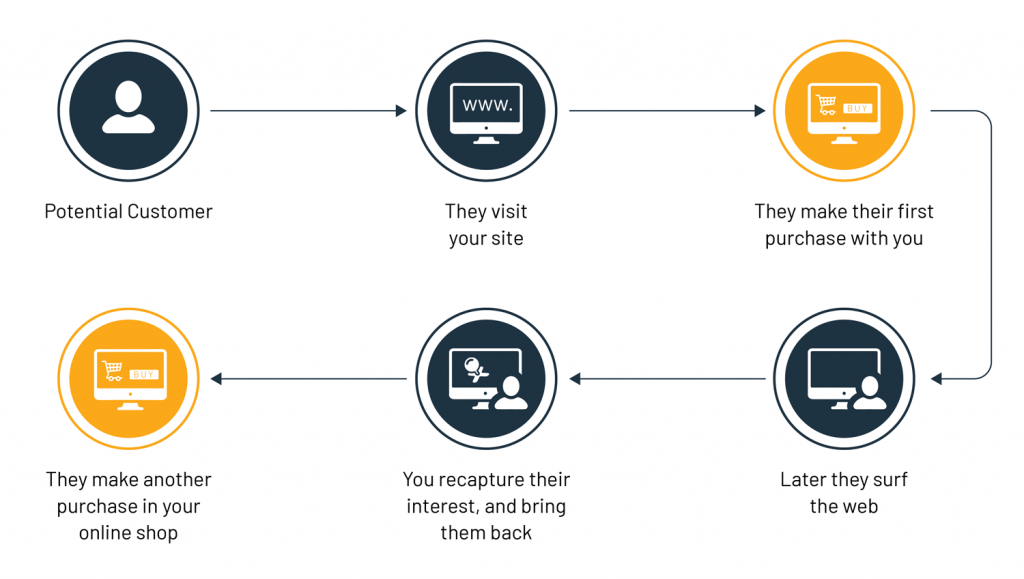
It allows you to reconnect with customers who shopped with you in the past. That way, you can upsell them with a higher-priced offer, which in turn increases their customer value to your business over time.
For example, you could retarget a customer who bought a pair of sweatpants from you and encourage them to also buy a jacket from the same brand.
The bottom line?
A simple email to your existing customers could boost your ecommerce sales in a matter of hours!
💡Bonus Tip
If you want to learn how you can retarget your customers via Facebook ads, you should read the following guide about how to create a Facebook retargeting campaign.
4. Offer an Entry-Level Product
If you sell a product that nobody knows about or comes at a premium price point, it might be a good idea to add an entry-level product to your range.
An entry-level product is usually a stripped-down alternative to your premium offers at a lower price. Which means that more people can afford to buy their way into your brand.
And this gives you a great opportunity to upsell these customers at a later stage.
Take a look at Tesla:
They let users configure the car of their dreams with hundreds of different options.
And because they know that many people can’t afford the high-end version of their product, they also offer cheaper options as an alternative:
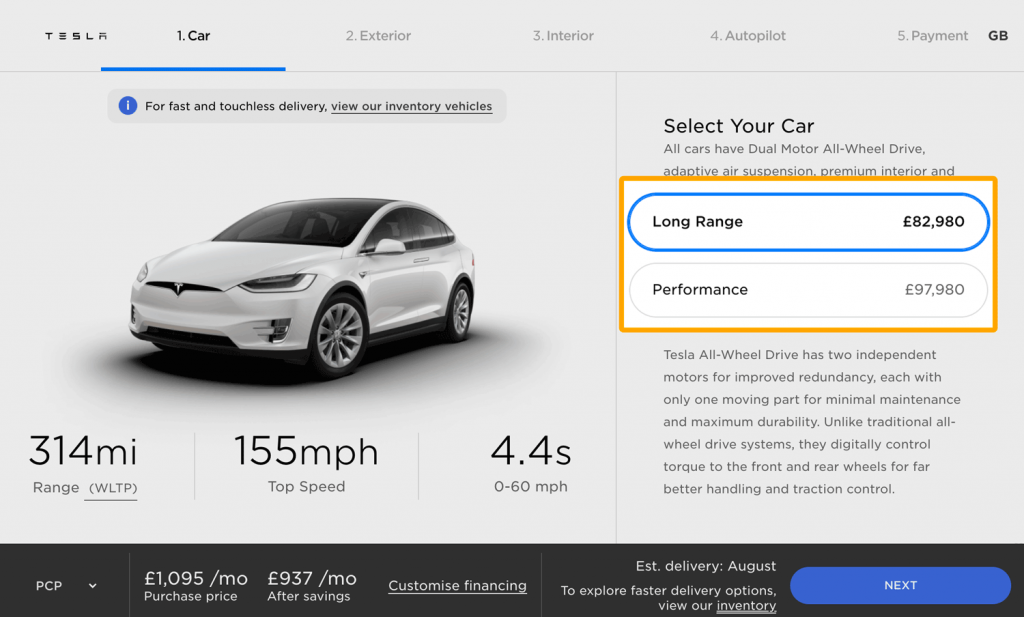
5. Use Scarcity Tactics
You’ve heard about the basic economic model of supply and demand. The more supply there is of a product, the cheaper it gets for customers.
But it also works the other way round.
Take the following example from a study of the University of Virginia from the year 1975 (!)
They ran an experiment in which the researchers filled two jars with cookies.
One jar with two, the other jar with ten cookies.

Which jar do you think was rated as more valuable by the participants of the study?
You guessed it: The one with the two cookies.
The question is:
Does this principle also work in ecommerce?
It sure does!
In fact, it’s widely used by all your favourite online shops.
No matter if it’s about travel…

…or the latest in fashion…

The bottom line?
If you want to increase your ecommerce sales, make sure you communicate that your offers are finite.
You can do this in a couple of ways:
- Display your stock levels
- Offer limited edition items
- Offer time-limited price discounts
- Show the number of visitors viewing a product page
- Show the number of product sales in the past 24 hours
That’s it!
6. Add Item Variations
Here’s a simple hack you can apply in less than five minutes!
If you’re selling an item in different colours, flavours or pack sizes, simply add all the variations to your product page.
That way, your site visitors won’t have to search through multiple pages to find what they’re looking for.
You’ll almost immediately see a significant increase in your conversion rates.
On Amazon, it looks like this:

And if you want to take it one step further, describe the use case of your product variation.
For example, the Dropbottle.com online shop gives visitors an idea of the social setting each pack size applies to: single, friends and family.

7. Expand Your Selection
Another option to increase your sales is to expand your existing range.
In other words: You add more products to your catalogue.
But how do you know which items to add?
Here’s my three-step formula:
Step 1: Listen to feedback from customers
Here’s the thing: You don’t need to spend a lot of money on customer research.
If you’ve been selling products for a while, you simply need to take a look at what customers say about your items.
Start by skimming through the customer reviews of your products.
For example, users who bought this garden chair left frustrated reviews about how difficult it was to assemble:
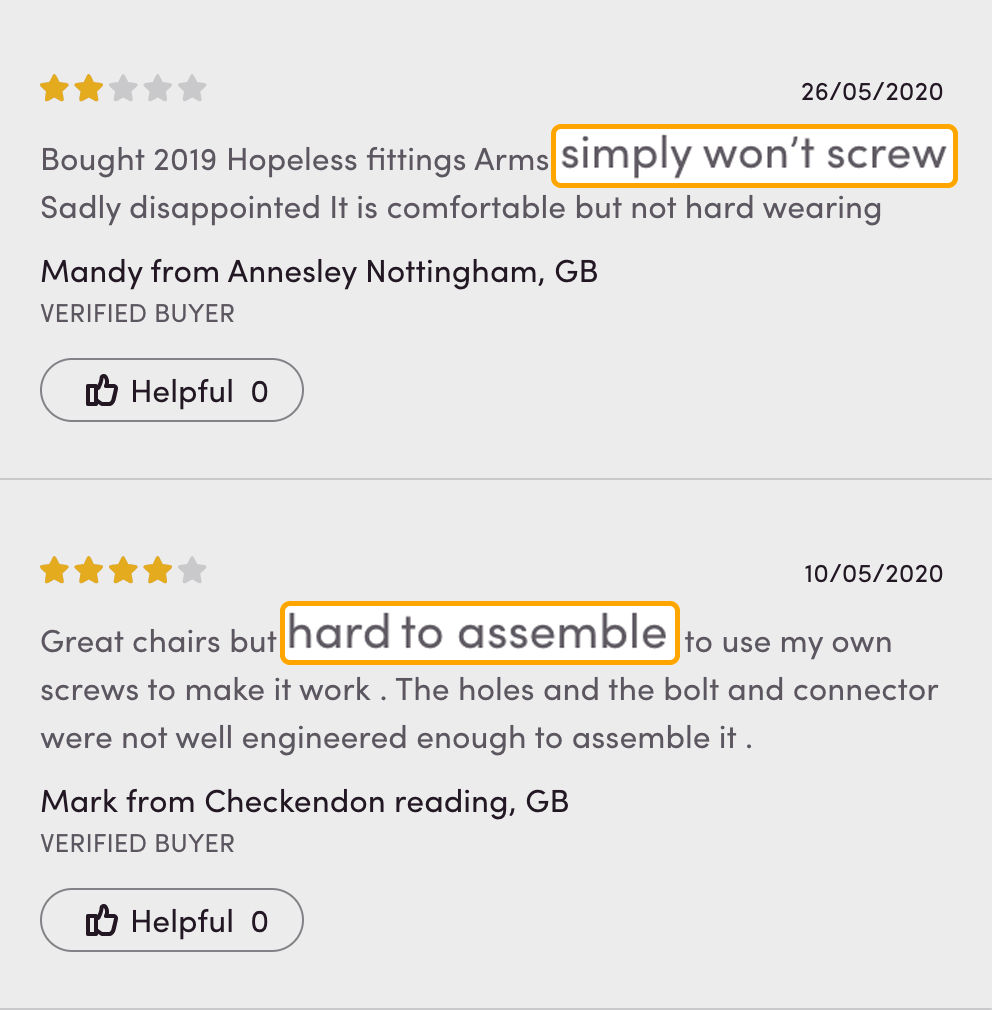
So it might be a good idea to offer an assembly service to everyone who wants to buy this product.
Another source for customer feedback are the emails people send to your support team.
For example, if people ask repeatedly for products that you don’t offer right now, you should think about adding these to your catalogue.
Step 2: Think about complementary products
Next, you want to think about products that complement your existing range.
Are you selling shoes? Then you also might want to offer shoe care products.
Or maybe you sell electronics. Then it could be a good idea to add a warranty option to your offers:

Step 3: Sell more of what already works
The last step is to take a look at your top selling range.
There’s no need to reinvent the wheel here.
You could simply introduce new colours or pack sizes of your top sellers to sell even more of them.
That’s all there is to it.
8. Accept More Payment Options
Many online shops only accept the common range of credit cards as a payment option.
That’s a HUGE mistake.

In fact, if you only accept credit cards, you might miss out on a large customer base.
That’s because TD Bank’s Annual Consumer Spending Index found that 23 percent of millennials don’t even have a credit card.
Fortunately, adding more payment options to your online shop is easy:
Simply sign up for an e-wallet with Paypal or add debit cards to your accepted payment methods. And if you want to go the extra mile, you can also accept a simple bank transfer.
9. Raise Your Prices
Yes, you read that right.
If you want to increase your ecommerce sales, raise your prices!
Let me explain:
If you sell products that add true value to the lives of your customers, chances are they’re willing to pay for it.
And if you sell your products too cheap, you’re basically saying that they aren’t really that good.
Introducing: Value-based pricing.
We’ve discussed the principle of value pricing in length. In case you missed it, I highly recommend you to check out this article, where I explain everything about it.
The question is:
How do you know if your customers will accept a higher price?
A good way to do this is to run an A/B test, also known as split testing. Simply show 50% of your online shop’s visitors a higher price for the same product. Then, compare the conversion rates.
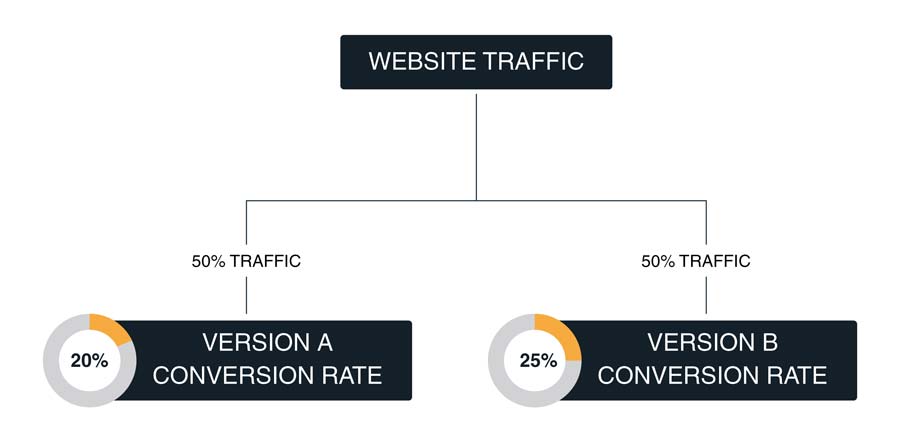
If your conversions haven’t moved much, it’s time to raise the price for your tested product.
A price increase not only increases your sales.
It’s also an indirect statement about the quality of your products, which tend to positively reflect on your brand image.
10. Use the Anchoring Technique
Before we dive into the final tip of this list, let me ask you a simple question:
Which offer do you think is more attractive?
Offer A with a price of $50, discounted from $100 (50% off), or
Offer B with a price of $80, discounted from $100 (20% off)?
Chances are, you’re opting for Offer A.
And that’s the power of price anchoring:
Your brain refers to the $100 before the discount to evaluate the attractiveness of an offer.
So if you want to increase your ecommerce sales, here are two easy steps to use price anchoring in your online shop:
Step 1: Show the price before discount
Whenever your product goes on sale, make sure you show the price before the discount. This can be the product’s recommended retail price (RRP) or simply the price at which you sold the product before.

Step 2: Display higher prices first
Another effective way to use price anchoring is to offer different product variations. When you do that, always make sure to display the highest price first. Customers will then refer to the options with a lower price point as the better deal.
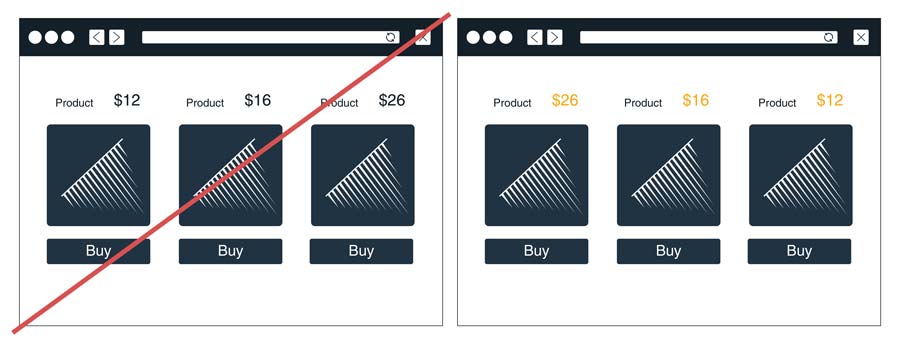
Conclusion
I hope you enjoyed my ten tips to increase your ecommerce sales. Got questions or comments? Ping me on Twitter!

